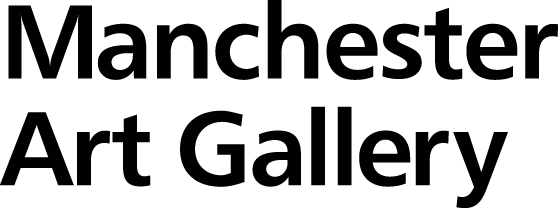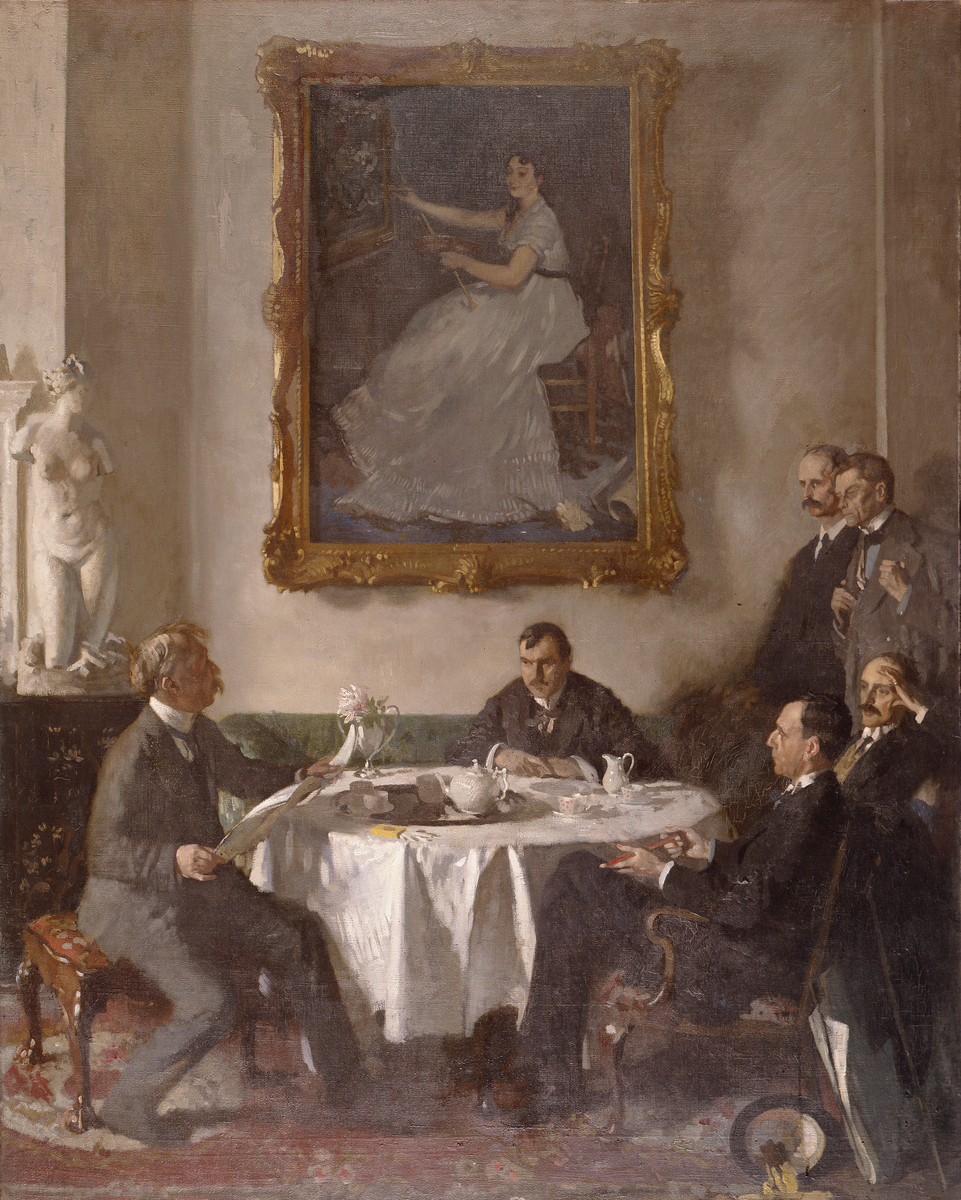Homage to Manet
Summary
An interior scene depicting a group of men around a breakfast table, above which hangs a large painting of a female artist. The room depicted is in Sir Hugh Lane's house in South Bolton Gardens, which was later acquired by Orpen and used as a studio. To the left of the table sits the critic, George Moore, reading aloud from a newspaper, with a model of a Greek statue of the Medici Venus owned by Orpen (an emblem of love) up against the wall behind him. Listening to him across the table are the painter, Philip Wilson Steer; art critic and Keeper of Tate Gallery, D.S.MacColl; the painter Walter Sickert; Sir Hugh Lane and the painter and Slade professor Henry Tonks (left to right). This group were responsible for championing modern French art. The painting above is Edouard Manet's picture of Eva Gonzales. Orpen painted this homage to Manet's portrait of his pupil, the painter Eva Gonzalez (National Gallery, London) at a time when Manet was beginning to be considered in England as the founding father of modern painting. The Manet portrait was owned by the wealthy Dublin collector, Hugh Lane and for a time stood in Orpen's Chelsea studio where he could admire it at first hand and while he worked on this painting. Orpen experimented with a number of different compositions and people for what is a visualisation of the network of critical interest, painterly inspiration and money which led to the canonisation of Manet in the English art world.
Display Label
Channel Crossings English and French Impressionism and Post-Impressionism from the collection of Manchester Art Gallery This display looks at the allure and excitement of French art for a generation of English and Scottish painters emerging from the claustrophobia of late Victorian painting. Breaking with the Classical rigours of the Academy and the Salon, the artists who came to be known as the Impressionists painted naturalistic scenes with loose and quickly applied brushwork to convey the effects of light and the natural colours of shadows which had previously been rendered with blacks and browns. They explored the French countryside where they learned how to paint directly en plein air closely studying the changing effects of the seasons. Making regular visits to or studying in Paris, English and Scottish artists were in turn enthralled by these painterly discoveries. The new method of painting they then applied to the English landscape, to still lifes, portraits and interiors. Painters of the New English Art Club like George Clausen, John Singer Sargent and Philip Wilson Steer combined the subject matter of late Victorian genre scenes with the new style. Works by these artists and others are here shown alongside a few choice examples of French Impressionism from the collection and by the fore-runners of Impressionism; Eugène-Louis Boudin, Charles Daubigny and Johan Jongkind. While the English artists went to France the French painters and their dealers, such as Paul Durand-Ruel, escaped the Franco-Prussian war of 1870-71 and went to London. Their paintings were seen in England and some were even bought by Manchester collectors. In the Edwardian era newer developments in French art inspired English and Scottish artists on their cross-Channel trips and via a series of influential London exhibitions. The high-keyed colour and bold lines of the Post-Impressionist paintings of Paul Gauguin and Vincent Van Gogh were now huge influences on the artists of the Camden Town Group such as Harold Gilman and Charles Ginner. Later still Matthew Smith was to take his inspiration directly from Henri Matisse under whom he studied in Paris.
Object Name
Homage to Manet
Creators Name
Date Created
1909
Dimensions
canvas: 162.9cm x 130cm
frame: 197cm x 159cm
accession number
1910.9
Place of creation
England
Support
canvas
Medium
oil paint
On Display
[G17] Manchester Art Gallery - Gallery 17
View all
Legal
© Manchester Art Gallery

